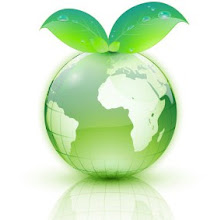
Last month, my uncle travelled to China for two week. He paid a visit to the local Furong Karst Cave, an attractive stalactite cave, in Wulong County of southwest China’s Chongqing and shared his experience with me. Exploration of stalagmites and stalactites are just some of the very exciting activities in caving. About 30 different kinds of Sedimentary Characteristics can be found in Furong Karst cave, with an area of 37,000 square meters, which draws attention of expects and tourists. In visiting caves, the most enjoyed and appreciative part is the pleasure of classifying different types and shapes of formations. It was a truly memorable journey. Will you spend time to visit them just to experience and personally see various formations inside a cave?
Stalactites are a type of speleothem (secondary mineral) commonly seen suspended on ceilings and walls of caves. Stalactites almost always have pointed tips, whereas stalagmites are usually rounded, or even flat.
Stalagmites, on the other hand, are a type of speleothem that develop as they arise from the ground and floor of a cave. Stalagmites are built up from many successive growth layers which are made up of tiny, elongate calcite crystals oriented roughly perpendicular to the growing surface.
Through time, some of the fine shapes would be columns, dogtooth spar, cave pearls, flowstone, helictites and soda straws as well as carrot and curtain shape. If these formations grow together, the result is known as a column. As with all speleothems, they are identified not by their mineral composition, but by their outward form and internal structure. Their natural clock has thus allowed dating of associated paleontological and archaeological finds, as well as records of past climate registered in the stalagmites themselves.

the six most common speleothems with labels.
CaCO3, Calcium carbonate

Calcium carbonate is a common substance found in rock in all parts of the world, and is the main component of shells of marine organisms (corals), snails, pearls, and eggshells. Calcium carbonate is found naturally as the following minerals and rocks:
- Calcite (a crystalline form of calcium carbonate)
- Limestone
- Marble
The main use of calcium carbonate is in the construction industry, either as a building material in its own right (right) or limestone aggregate for road building or as an ingredient of cement.
The trigonal crystal structure of calcite is most common.

Stalactites and stalagmites have different colors depending on the minerals (iron, copper) that are present, but most of them are brown colored. Different shapes form depending on the activity and interactions among deposits, water, air and gravity. When water, air and rocks interact, these structures are produced.

When rain falls it dissolves some carbon dioxide from the air. If the resulting solution comes into contact with underground calcium carbonate deposits it can dissolve these rocks by reacting with them to form soluble calcium hydrogencarbonate. The chemical formula is
CaCO3(S) +H2O(l) +CO2(aq) → Ca(HCO3)2(aq)
The underground limestone can gradually be dissolved, leading over millions of years to the formation of underground caves.
Stalactites and stalagmites are produced by reactions which are the reverse of those in which caves are formed. If ground water containing calcium or magnesium hy
 drogencarbonate evaporates slowly over extremely long time periods, this can result in beautiful cave formations made up of calcium carbonate or magnesium carbonate. The reaction is
drogencarbonate evaporates slowly over extremely long time periods, this can result in beautiful cave formations made up of calcium carbonate or magnesium carbonate. The reaction is Ca(HCO3)2(aq) → CaCO3(S) +H2O(g) +CO2(g)
An average growth rate is 0.13mm a year. The quickest growing stalactites are those formed by fast-flowing water rich in calcium carbonate and carbon dioxide, these can grow at 3mm per year.
Type
Every stalactite begins with a single mineral-laden drop of water.
 Stalactites:
Stalactites: - Soda straws are very thin but long stalactites having an elongated cylindrical shape rather than the usual more conical shape of stalactites.
- Helictites are stalact ites that have a central canal with twig-like or spiral projection that appear to defy gravity. Include forms known as ribbon, saws, butterflies and “hand”.
- Chandeliers are complex clusters of ceiling decorations.
- Broomstick stalagmites are very tall and spindly.
- Totem pole stalagmites are also tall and shaped like their namesakes.
 In touring several stalactite and stalagmite-forming caves, you must follow several rules such as "don't touch the rocks!" .This is generally because the formation is considered to still be growing and forming. Appreciating its beauty is good but following some precautions would be better so as to ensure protection for visitors as well as other creations therein.Skin oils and dirt from the hands can also stain the formation and change its colour permanently.
In touring several stalactite and stalagmite-forming caves, you must follow several rules such as "don't touch the rocks!" .This is generally because the formation is considered to still be growing and forming. Appreciating its beauty is good but following some precautions would be better so as to ensure protection for visitors as well as other creations therein.Skin oils and dirt from the hands can also stain the formation and change its colour permanently. 

I had always long for travelling all over the world, exploring the beauties of nature and experiencing all different way of lifestyle. It seems impossible for now. But if you are interested in caving, you must not miss Chamber of Rarities in Brazil and Doolin Cave in Ireland to explore their beauty.















































